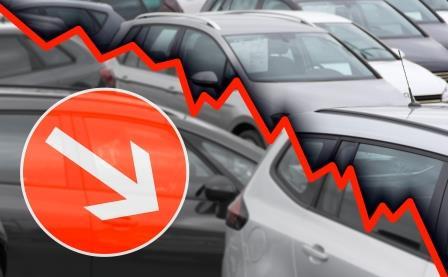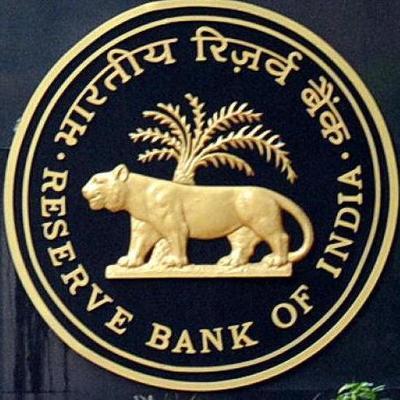 The slowdown in the domestic economy called for an adequate response from both the Central Bank and the government. The RBI has gone for successive rate cuts, and has cut the repo rate by an unconventional 35 bps in its last policy meet. With the focus now shifted to the government and clamour for a fiscal stimulus, Finance Minister Nirmal Sitharama announced a comprehensive package of measures to boost the economy. It came with no surprise that a large number of measures were targeted at the automobile industry.
The slowdown in the domestic economy called for an adequate response from both the Central Bank and the government. The RBI has gone for successive rate cuts, and has cut the repo rate by an unconventional 35 bps in its last policy meet. With the focus now shifted to the government and clamour for a fiscal stimulus, Finance Minister Nirmal Sitharama announced a comprehensive package of measures to boost the economy. It came with no surprise that a large number of measures were targeted at the automobile industry.
The automobile industry is the pillar of the Indian economy, contributing 7.5 percent to the country’s GDP. The manufacturing sector contributes to around 17 percent to India’s GDP, and within the manufacturing sector, the share of automobile industry stands at 49 percent. The industry employs around 8 million workforces directly and indirectly.
However, the automobile industry is facing major headwinds both at the global and domestic level. As per the projections, the global economy is expected to grow at 2.6 percent in 2019 compared to 3 percent in the previous year. One of the major factors for the current slowdown is the trade tension between the US and China. The US-China trade war has brought a slump in global demand. This has aggravated the crisis in the automobile industry recovering from the falling production due to the switch to new fuel emission standards. Globally, the demand and production of automobiles have declined in 2018 for the first time since 2009.
Indian Scenario
In India, a similar decline in demand and production cut has happened in the past- in 2000, 2001 and 2008. In the present scenario, rural distress, slowing consumption, and the liquidity crunch caused by the NBFC crisis has negatively affected the auto industry. The rural economy is still predominant in India with a share of around 70 percent. Around 64 percent of the rural workforce is employed in the agricultural sector. It shows that the performance of the agriculture sector greatly determines the health of the rural economy. However, it could be seen that food inflation has registered a negative rate consecutively for five months before turning positive in March’19. It led to a decline in the consumption in the rural economy, which brought down the demand for the products from the automobile industry.
Adding to the rural distress, the liquidity crunch in the market has also badly affected the automobile sector. The rising NPAs and Asset Quality Review (AQR) by the RBI has made the banks more risk-averse. This led to a decline in lending by the banks. In such a scenario, it was the NBFCs that stepped in to provide the necessary credit to the consumers. However, with the crisis triggered by the ILFS default, the economy faced a severe liquidity crunch. The repercussions of the NBFC crisis were also felt in the automobile sector. According to the letter written by SIAM to the finance ministry, 70 percent of two-wheeler sales and 60 percent of commercial vehicles sales are financed by the NBFCs. The declining sales figures show that the crisis in the NBFC sector has hit the automobile industry.
Furthermore, the push for electric vehicles by the government and the imposition of BS-VI standards from April 2020 onwards has left the potential buyers confused. The postponement of vehicle purchases by potential buyers is also reflecting on the sales figures.
As per the latest data, passenger vehicles sales registered a declining growth rate consecutively for nine months. The passenger vehicles sales have declined by 31 percent YoY in July’19. Domestic car sales were down by 36 percent YoY in July’19, whereas the two-wheeler sales were down by 17 percent YoY during the same period. The declining sales are forcing all the major companies to cut down production. For instance, in response to the slowing demand, the top automakers including Maruti Suzuki, Tata Motors, Honda, Mahindra and Mahindra have gone for a production cut. The production cut by the companies has resulted in job loss. For instance, the unemployment rate was 5.6 percent in July’18, whereas in July’19 it stands at 7.5 percent.
Booster Measures
Though Finance Minister has not conceded the pressing demand of the industry to bring down the GST rate to 18 percent, there are a slew of measures for the sector to cheer about. Measures such as accelerated depreciation of 15 percent (making it a total of 30 percent) for vehicles acquired till March’20 and deferment of proposed increase in registration fees for new vehicles to June’20 are expected to have a positive impact on the market. Uncertainty on the switch to BS-VI emission standards, was also addressed by the Finance Minister. All the BS-IV vehicles purchased till March’20 will be operational for the entire period of registration.
With a view to bring in more liquidity, Public Sector Banks (PSBs) will get an upfront funding of Rs 70,000 crore through the recapitalisation scheme. Finance Minister has pushed for repo rate linked products by the banks, to ensure better transmission of rate cuts. With repo rate at 5.4 percent, a nine year low, such a move would ensure cheaper credit to the consumers. This, together with the budget announcement of partial credit guarantee of Rs 1 lakh crore to PSBs for the purchase of high-rated pooled assets of financially sound NBFCs, is expected to bring in more liquidity to the market, beneficial to the auto industry.
With the upcoming festive season, it is expected that the above measures will bring in more consumer confidence and a positive sentiment in the market that could spur demand. Finance Minister’s assurance on the scrappage policy will boost the demand in the auto industry. However, the push for electric vehicles could result in some delayed purchases by the consumers. Considering the size and the contribution of the automobile industry, the revival of the industry is important for the economy as a whole.










This article summarizes the current situation of the Indian Automotive Industry very well and easy even for a lay man to understand. Very well written thanks !
Good analysis
Very good focus towards the share trading analysis by Shri Anandji Thanks